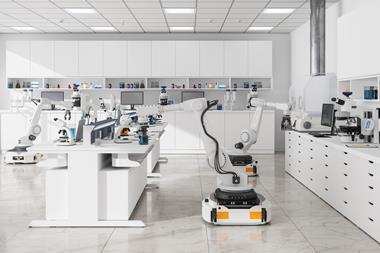Three events which together constitute the good, the bad and the ugly sides of a medical breakthrough
’To habituate myself to the excitement, and to carry it on gradually, on December 26th I was enclosed in an air-tight breathing-box, of the capacity of about nine and one-half cubic feet, in the presence of Dr Kinglake.twenty quarts of nitrous oxide were thrown into the box.By degrees, as the pleasurable sensations increased, I lost all connection with external things; trains of vivid visible images rapidly passed through my mind and were connected with words in such a manner as to produce perceptions perfectly novel.I exclaimed to Dr Kinglake, "Nothing exists but thoughts! - the universe is composed of impressions, ideas, pleasures, and pains".’ Researches, chemical and philosophical, chiefly concerning nitrous oxide or dephlogisticated nitrous air and its respiration, Humphry Davy, London, 1800.
Though the Flashback column below this will undoubtedly celebrate a range of chemical anniversaries associated with this time of year, it may well overlook three events, which together constitute the good, the bad and the ugly sides of a medical breakthrough. The ’good’ anniversary is on 10 December; 161 years since an inspired piece of lateral thinking changed the relationship between chemistry and medicine for ever. The ’bad’ came the following year when a stroke of ill fortune almost stifled this medical breakthrough. Finally, the ’ugly’ part of the story (from the winter of 1847) involves a deranged genius, a bottle of sulfuric acid and some ladies of the night. Welcome to the strange story of Horace Wells.
As we’ve seen, Davy got quite verbose about the effects of nitrous oxide, so one dreads to think what word count was accumulated by his friend Peter Roget (of Thesaurus fame) when he tried to describe his experiences with it. Roget was but one of many associates of the great man who cottoned on to the recreational uses of the gas, well before its potential as an anaesthetic were realised. But, ironically, it’s after the recreational use turned to medical that the saddest story rears its head.
If you want the perfect summation of the life of Wells, look no further than the triptychal The discovery of anaesthesia by Spanish artist Cecilio Pla (1906). This can be viewed online, as part of an excellent paper by Avelino Franco et al on the painting (Anesthesiology, 1998, 88, 1387).
In it we see the three key stages of the Wells story, the first of which was his realisation that the laughing gas demonstration he witnessed in 1844 could actually hold the key to anaesthesia. The painting’s right hand panel shows the humiliation of his failed demonstration of this effect at Massachusetts General Hospital; evidently the quantities of gas administered were too low, leaving the assembled medical fraternity distinctly underwhelmed and the poor patient hardly ’under’ at all. Finally, the centrepiece reveals his lonely suicide in a prison bath tub.
Fortunately, perhaps, the artist chose not to include a depiction of a chloroform-addled Wells lobbing sulfuric acid at a couple of New York prostitutes. This was the incident which resulted in Wells being banged up in the city’s notorious Tombs Prison; only recently built, this institution was by all accounts as forbidding as its name would suggest. Indeed, a few years after Wells’ incarceration a police department physician, one Dr Jones, admitted that a ’more miserable, unhealthy, and horrible dungeon cannot well be conceived of’. So it’s maybe no surprise that Wells’ life descended to its grisly denouement and the deliberate slicing of his femoral artery. Even as he lay dying, a letter announcing his elevation to honorary membership of the Medical Society of Paris was on its way - he never got to see it. One can but hope that, as his life ebbed away aged just 33, a man who’d had more than his fair share of Davy’s ’impressions, ideas, pleasures, and pains’ finally experienced some of the solace that his discovery bequeathed to others.
Paul Kelly












No comments yet